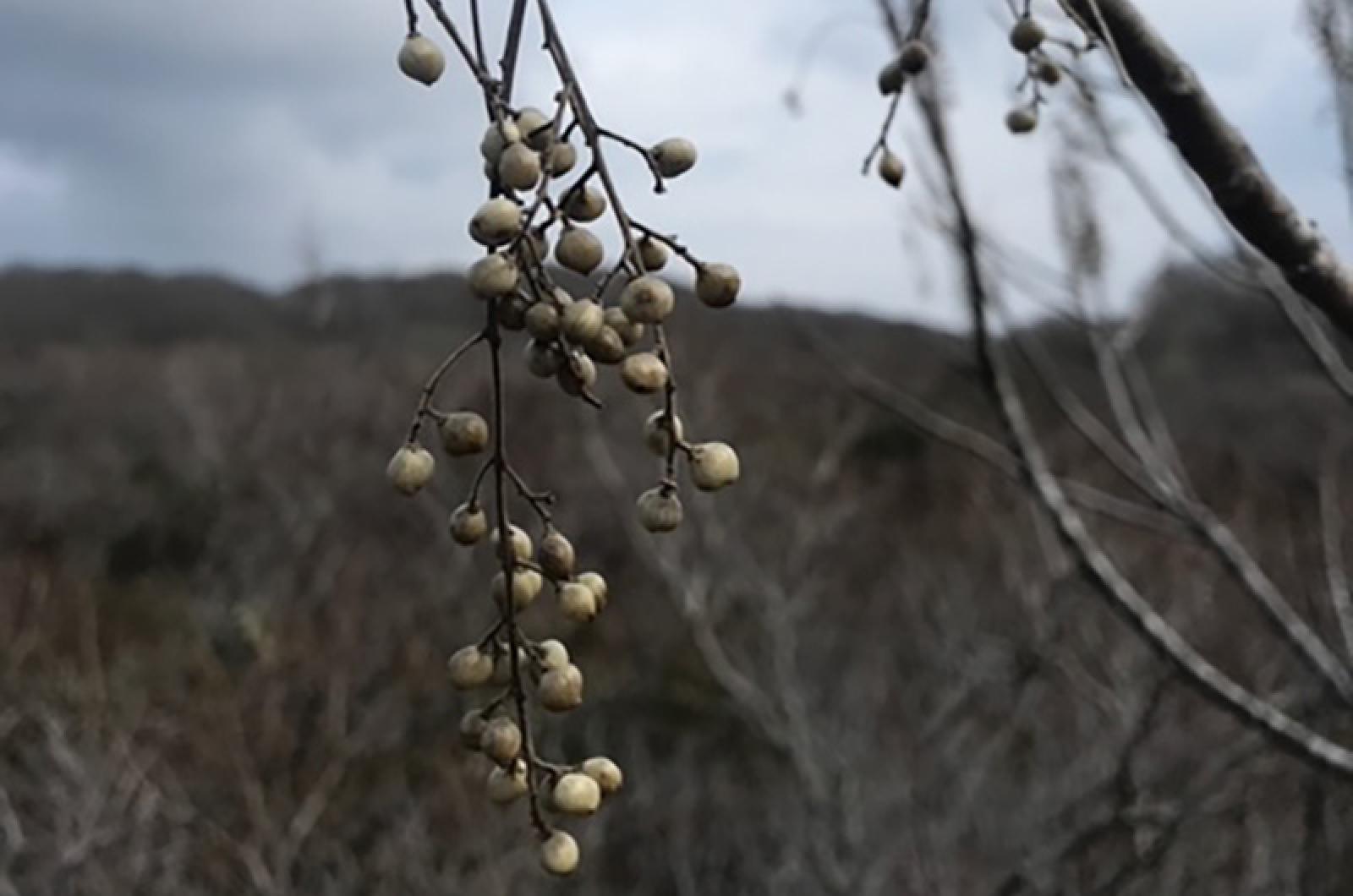This is not a poison pen article.
Although a triumvirate of Toxicodendrons (the genus that includes poison ivy, poison oak, and poison sumac) have much for which to be maligned, there have been people who find favor or at least optimism in these plants’ existence.
First, however, we must acknowledge the itchy rub. All three species contain a compound called urushiol that for much of the human population will cause skin irritation, blistering and general dermal discomfort. In some cases, as when these species are burned, even death is possible if their obnoxious oil gets into the lungs and causes respiratory distress that can, though rarely, become fatal.
Nor is a large amount of that toxic urushiol-containing oil needed. Only one nanogram can cause a rash, though the average exposure is about 100 nanograms. For a sense of scale, consider that one nanogram is the weight of a human cell, or one part of a grain of rice cut into 25,000,000 pieces. And beware, since the oil can affect us even in the winter and persist for quite a while, even being found on 100-year-old herbarium specimens.
But back to the benefits and those who advocated for these plants. There were early promoters for these potent poisons. Explorer John Smith in 1624 spoke of poison ivy, acknowledging its detriments and potential when he explained that it “hath got it selfe an ill name, although questionlesse of no ill nature” and that it has “many usefull employments, which time and industry no doubt will one day discover.”
A century and a half later, French doctor André-Ignace-Joseph Dufresnoy shared that optimism for using it as a remedy when he opined that those with skin conditions and leg paralysis may be helped by infusions made from poison ivy. He conducted his studies by mixing tinctures made from plants grown in his medicinal garden.
William Bartram, Philadelphia horticulturalist and plant superspreader, obtained and lovingly packed 220 American trees, shrubs, and herbs in 1784 to ship to Europe for botanic collections. Plants numbers 114 and 120 were poison sumac and poison ivy, respectively; these specimens and their descendants ended up in the English royal gardens at Kew, the gardens of the Faculty of Medicine in Paris, and Empress Josephine Bonaparte’s garden. Definitely an irritating legacy.
Modern afficionados also exist. The annual Poison Oak Show in Columbia, Calif., showcases the beauty of poison oak with competitions for the best arrangements, most potent-looking plant and even best poison oak jewelry and accessories. Not sure how that would work, but power to the people who would model those accoutrements.
Most wildlife and domestic animals include creatures that appreciate these poison plants, since they aren’t affected by urushiol, though they can carry the oils on their fur (think dogs). Many birds and mammals can consume the plant without ill effects. Birds enjoy the berries, while deer and others will browse on the leaves and stems. Some primates, and, interestingly, guinea pigs are exceptions and can be negatively affected by these pestilential plants.
There are those who would argue that “time and industry” have led to a greater love of calamine lotion than of these three poison plants, but there will probably also always be others itching to prove their value.
Suzan Bellincampi is director of the Felix Neck Wildlife Sanctuary in Edgartown, and author of Martha’s Vineyard: A Field Guide to Island Nature and The Nature of Martha’s Vineyard.







Comments
Comment policy »